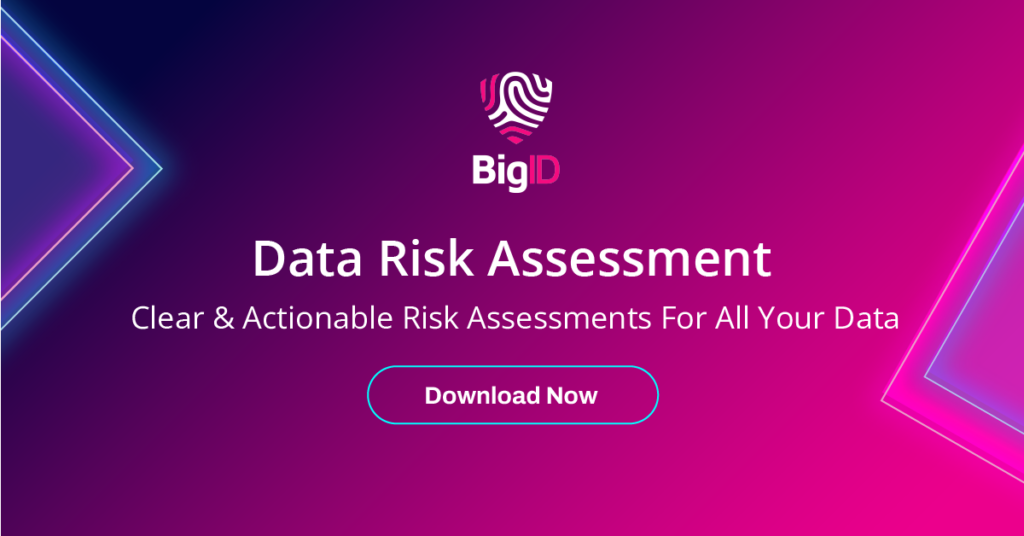Have you ever used your face to unlock your phone? Used a fingerprint scanner to get access to your gym? That’s biometric data in action.
Biometric data comprises distinct measurable biological or behavioral traits unique to individuals, utilized for identification or authentication. In contrast to conventional forms like passwords, PINs, or ID cards, it relies on inherent physical or behavioral attributes. Examples of biometric data include fingerprints, facial features, iris patterns, voiceprints, and behavioral traits such as gait or typing patterns.
Biometric data is becoming increasingly important for both the enterprise and consumer in a variety of ways:
- Physical Access Control: Confirms that only authorized individuals gain access when entering physical locations.
- Financial Services: Adds an extra layer of security and reduces the risk of unauthorized financial transactions.
- Healthcare: Verifies the identity of the patient, guarantees alignment with the correct medical records, and ensures the appropriate treatment.
- Law Enforcement: Plays an important role in criminal investigations for identifying and tracking individuals.
Sensitivity & Risks of Handling Biometric Data
Although biometric data elevates security and offers a sense of personalization, its sensitive nature demands the utmost protection. Unlike passwords, you can’t simply reset your iris pattern or fingerprint if compromised. In a data breach, the permanent and immutable nature of biometric data makes it vulnerable to malicious misuse. Moreover, being a form of unstructured data akin to emails and audio files, it is difficult to identify, classify, and/or categorize when stored, presenting both challenges and opportunities for IT and security teams to properly manage and protect this type of information.
The Security & Privacy Challenge with Biometric Data
- Expanded Attack Vector: In the event of a data breach, stolen biometric data can be misused by bad actors in many ways, including accessing bank accounts or unwanted surveillance.
- Storage & Encryption: Storing biometric data elevates an organization’s data risk profile. It should be encrypted and stored in secure environments to prevent unauthorized access.
- Consent & Privacy: Collecting, storing, and using biometric data for internal purposes raises privacy concerns. This necessitates transparent policies and clear consent mechanisms.
- Legal & Ethical Issues: The use of biometric data is subject to legal and ethical considerations, including regulations on data protection and individual privacy rights.
Biometric data offers powerful tools for identification and authentication. However, careful consideration must be given to security, privacy, and ethical concerns to ensure responsible, secure, and transparent use.

6 Ways To Protect Biometric Data
Want to know how you can better secure and protect highly sensitive biometric data from unwanted exposure? Here are six steps to get you there:
1. Discover Your Biometric Data Across Your Environment
Connect to and scan for sensitive data across any data source and type, especially unstructured biometric data as well as structured data – to mainframes, messaging apps, pipelines, big data, NoSQL, Cloud IaaS, SaaS, PaaS, applications, dev environments, and beyond. Scan unstructured data, including biometric data, 95% faster with BigID’s Hyperscan technology. Save time and avoid sensitive data blind spots across the cloud with Cloud Auto-Discovery.
2. Classify & Identify Sensitive Data With Context
Effortlessly classify and categorize challenging and elusive unstructured data, including biometric data. Combine traditional pattern-matching techniques with advanced, ML and NLP-based classification to achieve unparalleled accuracy and scalability in data classification. Customize and fine-tune classifiers to find unique types of biometric data that you may be storing. Label and tag data using a unified ruleset. Build a complete and dynamic sensitive data inventory with contextual attributes for holistic understanding.
3. Pinpoint High-Risk Data Access Issues
Efficiently identify and resolve high-risk data access issues at scale. Detect and investigate unauthorized access to sensitive, biometric data and pinpoint data sources containing biometric data with overly permissive access. Simplify the access rights management by natively revoking user and group permissions. Strengthen your Zero Trust strategy and get to a least-privileged model.
4. Prioritize & Remediate Your Data Risks
Centralize detection, investigation, and remediation of critical data risks and vulnerabilities. Assign severity and priority based on the context of the data, including its sensitivity, location, accessibility, and more. Continuously monitor for suspicious activity, pinpoint potential insider threats, and dive deep into the details for thorough analysis. Streamline remediation management across the right people and tools to ensure biometric data is fully protected.
5. Enforce Data Security & Protection Policies
Leverage pre-built sensitivity classification, security, and business policies that align with compliance and frameworks such as NIST, CISA, HIPAA, and PCI, enabling effective management and protection of sensitive data. Tailor policies that surface alerts and automatically trigger remediation actions across the right people and tools whenever biometric data is stored, shared, or accessed. Easily generate audit reports to verify compliance with ease.
6. Continually Report On Your Data Risks
Get clear and actionable insights on your data risks. Simplify and streamline data risk assessment reporting in a matter of clicks, wherever your data lives. Get complete data risk visibility across the cloud and on-prem, enabling insight into your most critical risks and vulnerabilities everywhere – including around biometric data. Automatically piece together a data risk assessment and communicate easy-to-understand insights to your stakeholders.
Want to learn more about BigID can help you better manage, secure, and protect all types of sensitive data – including unstructured biometric data? Schedule a 1:1 Demo with one of our data experts today!


